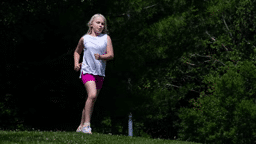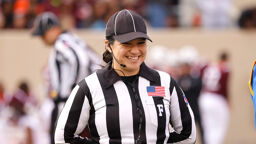Philippa York was arguably the most celebrated British bicycle racer of the 20th century. Yet, when she turned up to watch a race in Switzerland this spring, York realized it was her first time attending a bicycle race in the 21st century.
York, 59, formally rejoined Britain’s sporting world last year as the world’s first known transgender professional cyclist, active or retired. She unveiled a column for the popular British website Cycling News and accepted an invitation to commentate on the Tour de France for British television, a role she will reprise in July. These past 12 months, York has been celebrated across Britain.
It was January 2000 when York began her transition, gradually and privately shedding her former identity as Robert Millar, the great Scottish cyclist, over three and a half years. She yearned to complete the transition in private. Transphobic tabloid pieces reaffirmed her convictions, and York studiously avoided the public eye for 17 years. Then, at last, she felt the time was right.
“Ten years ago, there was tolerance, and tolerance implies that there’s something wrong with you,” said York, who lives on the south coast of England. Today, she said, “tolerance has become acceptance.”
Like most professional sports, cycling remains relatively inhospitable to the LGBT community. There was no openly gay cyclist when York joined her first professional team in 1980, and there is none now.
“These teams are all run by professional corporations,” York said. “If you were working for General Motors or Coca Cola, it would be no big deal at all. Nobody cares. But yet, in sport, it is some kind of major issue.”
How, then, to explain the universal acclaim that has greeted York’s return to cycling?
She credits the cyclists. Most professional racers are men in their 20s — men who, in 2018, have grown up in an era of increasing understanding and acceptance of transgender people. It was York’s daughter, Liddy, who persuaded her to accept the television gig and resume her public life.
“There’s no real judgment upon you any more. So that was all kind of refreshing.”
“The people that I’d left behind for all those years, they were OK,” York said. “The young riders, you know, they were OK, because they have access to all that information” now readily available about the transgender community. “There’s no real judgment upon you any more. So that was all kind of refreshing.”
Born in Glasgow in 1958, York had feelings of gender dysphoria from age 5, when she arrived at public school.
“And it came to break time and the school was segregated, the boys on one side, the girls on the other, and I remember occasions when I’d be on the boy’s side and I’d think it looked nicer on the girl’s side. And, of course, you couldn’t say anything, because the boys would pick on you.”
In her teen years, York grew her hair long, in the fashion of the day, and ventured out onto the Glasgow streets dressed as a girl. She tried to hide the outings from her parents, but eventually her father spotted her. He told her it was a phase.
York turned to cycling as a means to escape Glasgow. She joined a cycling club and revealed a seemingly boundless talent, winning a junior national title in 1976 and a senior title in 1978. She was first in her middle-class family to compete in any sport.
Bicycle racing ranks among the most physically demanding professional sports. Its capstone event, the three-week Tour de France, may be the most grueling contest in any major sport, akin to running 21 marathons on consecutive days.
York turned professional and emerged as one of the world’s most talented climbers, blessed with a powerful heart and a slender frame, perfectly suited for hauling a bicycle up a mountainside. In 1982, she finished second in the Tour de l’Avenir, a multi-stage bicycle race that showcases young talent. In 1984, she finished fourth at the Tour de France and won special honors as the year’s best climber.
While she never won the great French Tour, York earned podium positions three times at cycling’s other Grand Tours, finishing second at the Vuelta a España in 1985 and 1986 and second at the Giro d’Italia in 1987. Among British cyclists of her era, she was unsurpassed; the United Kingdom had produced only one other great Tour competitor, Tom Simpson, a sixth-place finisher in 1962.
The Britain of that time was a cycling backwater, much like the United States, which wouldn’t send a rider to the Tour de France until 1981. York’s career paralleled that of Greg LeMond, who entered his first Tour in 1984 and won it three times between 1986 and 1990. They were among the first English-speaking cyclists to make a mark in Europe. (My new book, “The Comeback,” recounts LeMond’s memorable career.)
“Greg was so talented and so strong,” York recalled. “He was always a better bike rider than I was, and he was probably a better person.”
“You’re only allowed to be who you are when you stop.”
As she rose to the top of the sport, York became increasingly convinced she would rather live as a woman. As a coping mechanism, she turned off her emotions, inspired by Bjorn Borg, icy icon of tennis. York grew socially awkward and aloof. She required a reputation as petulant and curt. She never seriously considered a gender transition until half a decade after her 1995 retirement.
“You’re only allowed to be who you are when you stop,” she said.
When York completed the transition, in 2003, she relocated to the English coast to start a new life. She remained in close touch with her daughter and son and a tight-knit group of loved ones and friends. She winced at talk that she had disappeared: “The people who needed to know, knew where to find me, knew what I was doing.”
The reception that awaited York upon her return to the sport was overwhelming. She came out in a statement published last July on the Cycling News website, coinciding with the start of the Tour and her return to journalism. Carefully vetted with loved ones, her statement announced that, “for a considerable time now, I have lived as Philippa.”
The British Telegraph newspaper recounted her journey as “one of British sport’s most extraordinary stories.” The Guardian took up her cause of decrying a lingering homophobia in cycling. This new round of coverage was notably free of transphobic hysteria.
“Philippa’s story is remarkable and has a real power to educate and change attitudes,” said David Isaac, chair of Britain’s Equality and Human Rights Commission. “It’s heartbreaking to hear of the guilt and shame she suffered so needlessly in the face of outdated attitudes, prejudice and media intrusion. But it is also heartwarming to see how attitudes are changing and how positive the reaction was to her announcement last year.”
In the twenty-odd years between York’s retirement and her return, Britain has risen to the top of professional cycling; British riders have claimed five of the last six Tours. And now, Philippa York enjoys a front-row seat.
“I’ve accepted that people are going to talk about my cycling career, and then they’re going to talk about my trans stuff and all, because those are the only interesting parts of my life,” she mused, in a gentle Glaswegian brogue.
“I’ve gone from a grumpy professional cyclist to a reasonably happy woman.”
Daniel de Visé is author of “The Comeback: Greg LeMond, the True King of American Cycling, and a Legendary Tour de France,” just published by Grove Atlantic Press. He can be reached via his website.
























